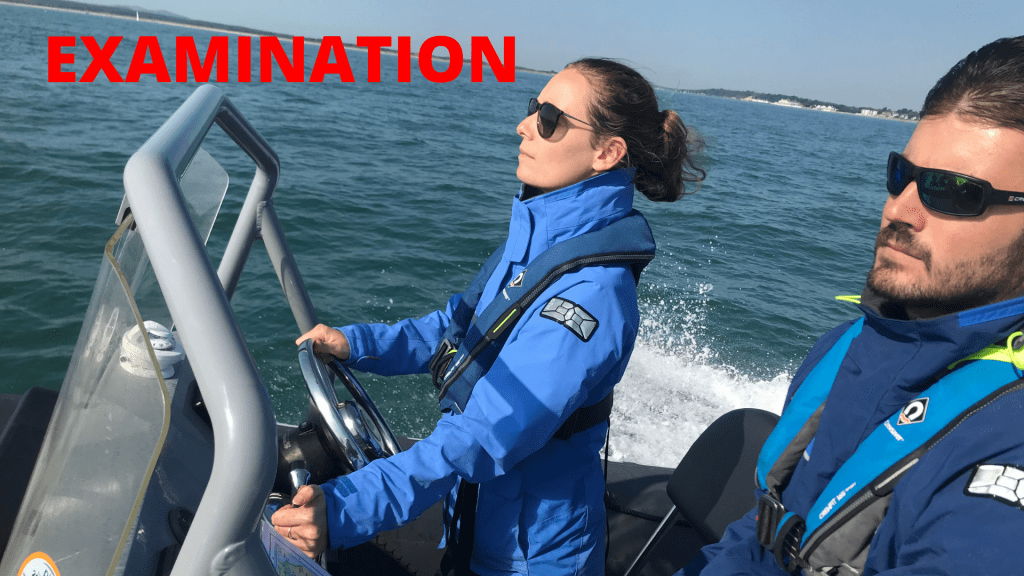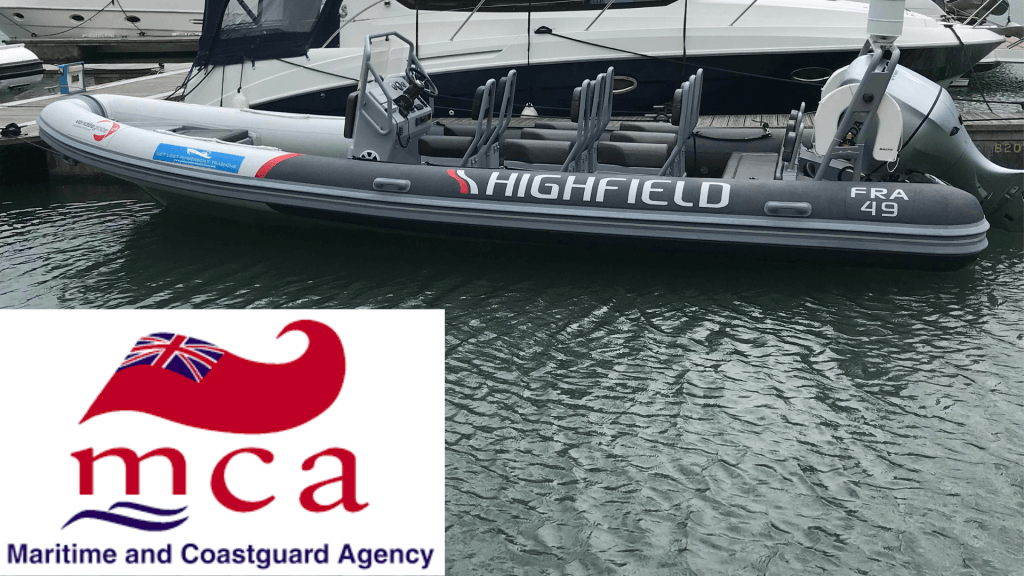
Guide to the RYA MCA Advanced Powerboat Exam
The Advanced powerboat exam is a day and night time test of boat handling and navigation. After successfully completing this exam you will be able to complete the rest of the steps and go pro.
Exams are arranged as required so please get in touch with us. Everything is explained in detail below.
Maximum 3 people per exam.
Experience required to take the advanced powerboat exam
There are some pre-requisites that you need to fulfil before you can take the exam.
Firstly, you will need theory knowledge to the level of the Coastal Skipper / RYA Yachtmaster shorebased course. It’s not mandatory to take the RYA course however. If you already have the knowledge from experience that’s fine.
You need some recorded time served on boats though. As a guide, 30 days experience during which you have logged 800 sea miles. 2 days should have been when you were skipper and the time should include at least 12 night hours.
Having said that, if you have completed an RYA advanced powerboat course the requirement is reduced to 20 days at sea and 400 logged sea miles.
You also need to be at least 17 years of age.
The boat we use for examinations

This is the commercial RIB we use for the exams. It’s the same boat as we use for the advanced powerboat course. She’s fully coded to commercial standards to go out day or night. She carries one 12 man life raft, flares, CAT C first aid kit and a whole host of other equipment.
Her engine is a Honda 250hp and she is capable of nearly 40 knots. She has a beam of 2.4 metres which makes her incredibly stable. As she is 7.6 metres long the helm and forward jockey seats are fairly dry too.
She is a high quality vessel and we are proud to use her for your important qualifications.
How long does the advanced powerboat exam last?
Like powerboat courses, there are a maximum of three students allowed on an exam. The amount of students will vary the exam time.
- 1 student = 4-5 hours
- 2 students = 5-6 hours
- 3 students = 6-7 hours
Things you MUST bring with you
You must have the following items with you when you arrive to take the exam:
- passport sized photo
- copy of your VHF radio licence
- RYA or STCW first aid certificate
And if you’re going commercial:
- copy of your sea survival certificate
- copy of your RYA PPR certificate
- completed and in date ML5 or ENG1 medical certificate
The RYA MCA advanced powerboat exam syllabus
1 Preparation for sea
Preparation of vessel.
Safety brief.
Stowing and securing gear for coastal passages.
Engine operations and routine checks, fuel systems, killcord.
Fuel system, bleeding, changing filters and impellors.
2 Boat handling
Hull forms and their handling characteristics, propeller configurations.
Knowledge of action to be taken in rough weather.
Significance of tidal stream on sea conditions.
Steering and power control through waves.
Understanding and correct use of power trim and tabs.
Towing, under open sea conditions and in confined areas.
Strategy up and downwind and in heavy weather.
Awareness of the effects of wind and tide when manoeuvring, including:
Steering to transits and in buoyed channels.
Turning in a confined space.
All berthing and un-berthing.
Picking up and leaving a mooring buoy.
Anchoring.
Recovery of man overboard.
Awareness of ground speed and ability to hold the boat on station.
3 Responsibilities of skipper
Can skipper the vessel with effective crew communication.
Preparing the vessel for sea and for adverse weather.
Tactics for heavy weather and restricted visibility.
Emergency and distress situations.
Customs procedures.
Courtesy to other water users.
4 Passage making and pilotage
Your chart work and theory knowledge should include:
Charts, navigational publications and sources of navigational information.
Chart work, including position fixing and shaping course to allow for tide.
Tidal heights and depths.
Buoyage and visual aids to navigation.
Instruments, including compasses, logs, echo sounders, radio navaids and chartwork instruments.
Passage planning and navigational tactics.
Importance of pre-planning.
High speed navigation, pre-planning and execution.
Use of electronic navigation – GPS (and Radar, if fitted).
Pilotage techniques and plans for entry into or departure from harbour.
Use of leading and clearing lines, transits and soundings as aids to pilotage.
Navigational records.
Limits of navigational accuracy and margins of safety.
Lee shore dangers.
You should be able to enter and depart from a charted port by day or night. Your Examiner will give you a pilotage exercise and ask you to explain your planning. You will need to be aware of the problems of collision avoidance and how to determine your position by night.
5 Meteorology
You should be able to use weather and tidal information to predict likely sea conditions and make passage planning decisions.
Definition of terms including the Beaufort scale, and their significance to small craft.
Sources of weather forecasts.
Weather systems and local weather effects.
Interpretation of weather forecasts, synoptic charts, barometric trends and visible phenomena.
Ability to make passage planning decisions based on forecast information.
6 Rules of the road
Application of the International Regulations for Preventing Collisions at Sea.
You should have a working knowledge of IRPCS as well as an understanding of their application. In addition to the “rules of the road” your knowledge should include all lights, shapes and sound signals.
7 Safety
Candidates will be expected to know what safety equipment should be carried on board the vessel, based either on the recommendations in the RYA Boat Safety Handbook (G103), or the Codes of Practice for the Safety of Small Commercial Vessels. In particular, candidates must know the responsibilities of a skipper in relation to:
Fire prevention and fighting.
Safety briefs.
Hull damage/watertight integrity.
Medical emergency.
Towing and being towed.
VHF emergency procedures.
Explanation of helicopter rescue procedures.
Use of flares.
Man overboard.
Search patterns.
Lifejackets.
Life rafts.
Awareness of risks to passengers and crew through shock and vibration caused by operating at speed.
Awareness of strategies to mitigate risk of injury caused by shock and vibration.
Candidates should be familiar with all the equipment on board the vessel, as they may be asked to use this during the examination.
You can see the requirements for the boats used for the exam on the RYA’s website by clicking HERE.